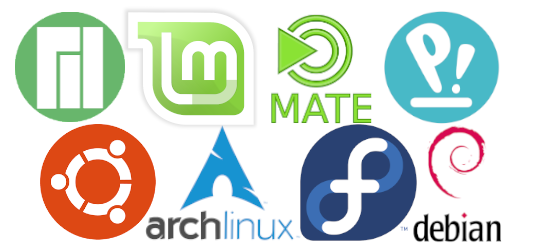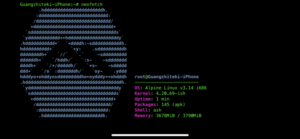I started using Linux since about 2011, mostly as an average desktop user. The very first Linux distro (short for distribution) I used was Ubuntu, version 10.04. At that time, the default Desktop Environment (DE) for Ubuntu was Unity, which has now been deprecated and replaced by Gnome 3. I still remember how nervous I was doing the first Linux installation. I backed-up all my data, read at least 3 different installation guides and took notes before finally pulling the trigger. And I still screwed up the dual-boot Windows installation.
There were also some other difficulties after the installation was completed. The brightness adjustment keyboard shortcut on my laptop didn’t work, and after every new boot, the screen was reset to a blindingly high brightness level; I didn’t know how to input Chinese characters in this new system, and had no idea what alternative software are there to those that I used on a daily basis in Windows. It took quite a while for me to figure out such problems, and gradually become used to this operating system.
Then, almost inevitably, came the phase of distro hopping. After you get to know some basic of one Linux distro, some itching curiosity starts to drive you towards testing out new distros one after another. That’s understandable once you realize that Linux is the only type of operating system that offers so many choices to the users, compared with Windows or MacOS that do their best to lock you down in a single version of a single OS. I tried installing different Linux distros, sometimes in a virtural machine, other times as bare bone OS. The list started from Ubuntu derivatives like Kubuntu, Xubuntu and Lubuntu, then I switched to Linux Mint for a while, experimenting both the cinnamon and MATE DEs. I read many articles and watched many YouTube videos about different Linux distros, new version releases and distro comparisons, and tested out some of them myself, like elementory, peppermint, Ubuntu MATE and Solus. Then I started to settle down on Manjaro, with the cinnamon DE.
It might be worth clarifying the difference between distros and DEs. In case you haven’t already known, distros are different "flavours" of Linux OSs, developed by different groups, usually with different methods of managing software repositories, with their own release/update schedules, and feature on some key selling-points (for instance, Lubuntu is meant to be super lightweight, while Kubuntu is designed to be feature-rich). DEs are the different graphical user interfaces, they define how the windows look like, how window navigation and movements are handled, what utility tools like the system tray, panels are used etc.. Popular DE names include Gnome 2, Gnome 3, cinnamon, xfce, KDE and LXQT etc.. What makes things a bit more confusing is that some distros and DEs share the same name, for instance deepin is both the name of a distro and its main flag-ship DE. Aside from these more "conventional", Windows-like DEs, there are also a big collection of tiling window managers, like i3, dwm, Qtile etc., that let the user interact with the OS in a different manner. They are more nerdy and require more configurations to work comfortably, but can be quite productive once you get used to it. In theory, one should be able to use any DE in any distro, but in practice some DEs work better with distros that offer more support to them.
So I settled at Manjaro cinnamon since about 4 years ago and never hopped again (except for installing raspbian on my raspberry pi). What is most attractive to me is that Manjaro is a rolling release distro based on Arch Linux, and it has access to both the Manjaro software repository and the Arch User Repository (AUR). A rolling distro delivers to the users continual updates of the system and all its softwares, so that one doesn’t have to make a system re-install or upgrade like in Ubuntu; and the AUR is a huge software repository in the entire Linux world, perhaps with the Debian repository as the only comparable rival. If you can’t find the desired software in Manjaro’s repository, you rarely need to look elsewhere beyond AUR.
So there is some difference between Manjaros’ repository and AUR. Arch used to be (and still is) labeled as being unstable, because it is a rolling release distro, and pretty much everything that rolls out to you is bleeding-edge. The price one pays for getting the latest and newest is some stability risk. However, there are plenty of arch users out there, and many have debunked the misunderstanding that arch being unstable. Manjaro’s repository serves as an extra layer of safety buffer in that it retains the new updates from AUR for some time for further stability checks before pushing to the users. Therefore it is a fairly safe repo/distro for both veteran and new Linux users. During my 4-5 years with Manjaro, there were only 2 instances that an upgrade broke something, once with a specific piece of software (zim to be more precise), and another time some font-related issue. In both cases I were able to fix the problem after about half an hour googling.
The choice of cinnamon as the DE is a more personal and subjective one. I think cinnamon strikes at a nice balance between simplicity and the amount of features that a DE offers. On my own simplicity-customizability rating spectrum, KDE, particularly the version 5 (code name Plasma) of KDE, sits on the most feature-rich and most customizable end. It allows one to customize pretty much every aspect of the DE, all in a GUI configuration system, so much so that you can easily get lost inside the configuration tool. The look of the DE is gorgeous, very modern looking and very eye catching. (It should be noted that since most DEs allow theme customization, the look of a DE is very much variable and depends heavily on the theme. I’m referring to the typical look of a KDE Plasma DE.) KDE also tends to be more on the heavy side in terms of resource usages. However, it is a very actively developed project and in every new release you see some improvements. Now, KDE has comparable RAM usage compared with other popular DEs like cinnamon and MATE, even smaller than Gnome 3. Its configuration tool is also seeing continual rearrangements to make it more intuitive to use. However, I feel that the responsiveness of KDE is still not as good as some more lightweight DEs, particularly the boot-up time (I haven’t hopped for a while, so I could be wrong.)
More on the lightweight and efficient side of the spectrum there is xfce. It is a fairly robust and quite customizable DE that many distros support officially, including Manjaro. The bare minimal installation of xfce looks bit outdated, but with some theming you can make it into a very modern looking DE. The tools come with xfce, for instance the xfce terminal, are also of very good quality. I didn’t pick xfce as my DE mostly for one reason: its default brisker menu "hijacks" your windows key so that if you choose to use the windows key to invoke the system menu, you can’t use it in any other custom keybindings. There are probably new fixes that solve this issue already, but I have become so accustomed to cinnamon, and there doesn’t seem to be other compelling motives that xfce has to offer for me to do a switch.
There are more lightweight DEs/window mangers that have an even lower score in terms of system resources, like openbox, awesome, Qtile, i3 etc.. I tried them for a little while, but didn’t quite like them, particularly those tiling window managers. The workflow I’m used to doesn’t seem to be quite compatible with the tiling-window style. Specifically, I often need to open a number of matplotlib figure windows and do inter-comparisons. A tiling window manager will tile these figure windows, together with my editor window, and the terminal window as well all into some kind of layout. I found it difficult to quickly bring up 2 figure windows into a comfortable location with comfortable sizes to compare their details, and switch to another pair, or perhaps a triplet to do further comparisons. It appears to me that a more traditional DE with a system bar is more convenient for such kind of workflow.
Now I’m nearly a 100 % full time Linux user, I only keep a Windows partition in my computer for some very specific tasks that Linux at the moment can’t easily support, for instance, editing some doc documents, particularly those with some sort of complex tables in them; or visiting some doomed websites that still require the compatibility mode of the IE explore. Other than that, I have found alternative softwares in Linux that fulfill my needs just as well, if not better. And I’m free from the annoying Windows update notices and , if one day I decide to wipe out the entire Windows partition, the ridiculous installation disk space requirements as well. The customizability of Linux also allows me to do some tweaks, or write my own scripts to automate some tasks, or to bring together unrelated softwares to form a workflow. I’ll share some of them in later posts.
As a concluding remark, I should say that I’m still not an advanced Linux user, I only recently learned how to do an arch Linux installation, and I am fully aware of my ignorance of the deeper secrets of the Linux system. However, as an average desktop Linux user, and one with a focus on academic researches and numerical computing, I could say that it is certainly a wise choice making the Windows-to-Linux transition. Academic writing and programming are both nicer inside Linux than in Windows. And if there are some advice that I could offer to newcomers, here are some:
- For those long term Windows users, give Linux a try. It is free, it offers a huge number of choices and a large room for customization. The hardware compatibility issues like what I encountered when I first got to use Linux has become increasingly rare nowadays. Even if you end up not liking it, at least you ventured out of the comfort zone for once and tried to explore the territory of unknown.
- For new Linux users that have made up their mind to try Linux, I would suggest you to pick one of the most popular desktop distros as a start, in order of personal preference: Manjaro, Linux Mint, Ubuntu (with the MATE DE), and Pop OS. This last one is a pretty new distro but is gaining popularity quickly. Do NOT use CentOS or Red Hat, they are meant to be installed on servers, not desktops and laptops. As you become more familiar with Linux, you will probably feel the urge to distro-hop, and perhaps settle on a different one as you started with. But that’s Ok. the Linux’s spirit is to offer choices, and encourage experiments.
- As one becomes more and more advanced into the Linux world, I feel that the choice of the Linux distro becomes less and less important. You should be able to achieve what you want in any Linux distro, with the only difference being exactly how you achieve it. Alternatively, you may become more concerned about some other aspects beyond usability that determines your choice of Linux distro, for instance, whether a distro is totally proprietary-software free. Either way, you get more free choices, and freedom of usage, compared with the A-or-B choice between doing a Windows update right now or later tonight.






